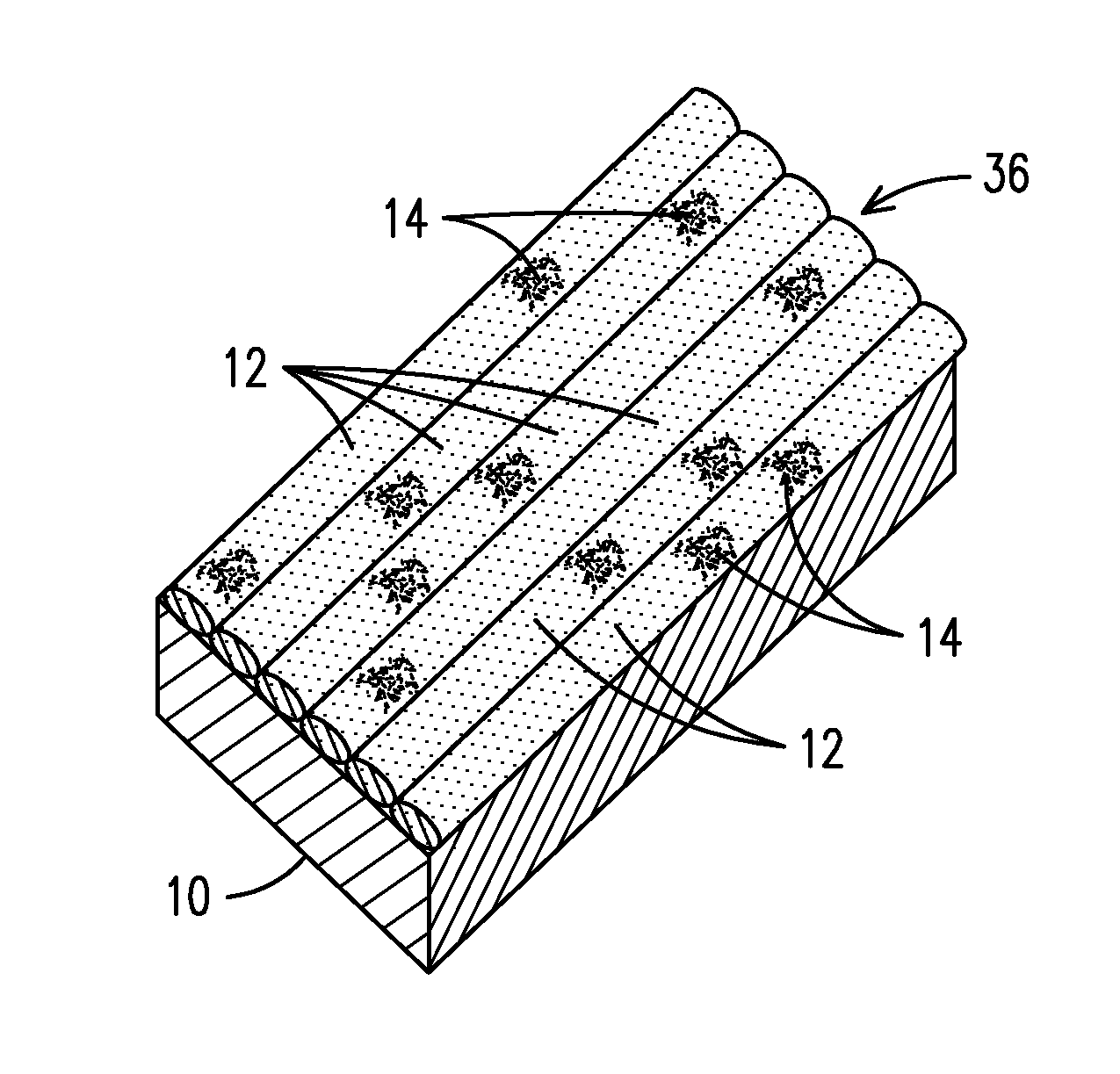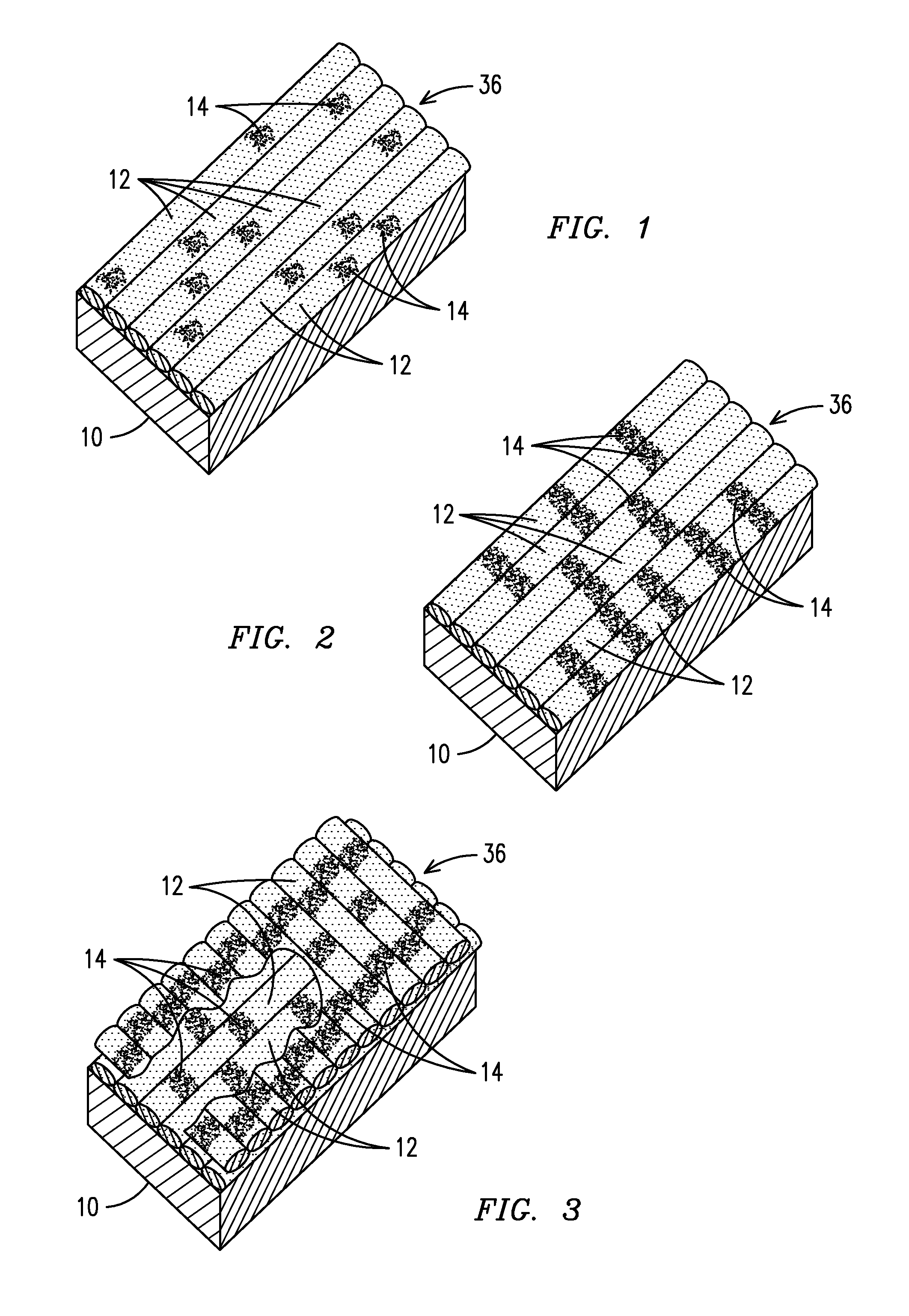Superalloy Repair Welding Using Multiple Alloy Powders
a superalloy and alloy powder technology, applied in the direction of soldering apparatus, turbines, manufacturing tools, etc., can solve the problems of high thermomechanically induced damage, low thermal mechanical fatigue life, and inability to use under-matched fillers for component repairs that require considerable strength
- Summary
- Abstract
- Description
- Claims
- Application Information
AI Technical Summary
Problems solved by technology
Method used
Image
Examples
example 1
[0039]A CM-247 nickel base superalloy was laser powder welded at room temperature using mixed powers of Mar-M-247® powder (−140+325 Mesh), INCONEL® 718 powder (−140+325 Mesh) and Haynes® 282® powder (−140+325 Mesh).
[0040]Depositions were carried out with a fiber-coupled continuous wavelength high power diode laser (HPDL) (Laserline, max. power output 3 kW), focused by a 200 mm focal length lens. The work distance was set to produce a spot size of 1.2 mm diameter. Powders were supplied by a coaxial powder injection nozzle with a powder focal distance of 8 mm. Two powder feeders were used to deliver Mar-M-247® and INCONEL®718 powders by Ar with a flow rate of 4 liters / min at pressure of 75 psi. A mixed gas of Ar+5% H2 with a flow rate of 7 liters / min was used as shielding gas to prevent the substrate and cladding from oxidizing. Two of the powder feed inlets were used to feed Mar-M-247® powder at a feed rate of 0.8 grams / min and another two powder feed inlets were used to feed INCONEL...
example 2
[0044]An overaged CM 247 nickel base superalloy was laser powder welded at room temperature using intermixed depositions with Mar-M-247® powder (−140+325 Mesh) and Haynes® 282® powder (−140+325 Mesh), respectively. For comparison, single Mar-M-247® powder as well as single Haynes® 282® powder were also deposited at the same conditions.
[0045]Depositions were carried out with a fiber-coupled continuous wavelength high power diode laser (HPDL) (Laserline, max. power output 3 kW), focused by a 200 mm focal length lens. The work distance was set to produce a spot size of 1.2 mm diameter. Powders were supplied by a coaxial powder injection nozzle with a powder focal distance of 8 mm. Two powder feeders-were used individually to deliver Mar-M-247® powder and Haynes® 282® powder respectively to produce intermixed deposit by Ar with a flow rate of 4 liter / min at a pressure of 75 psi. A mixed gas of Ar+5% H2 with a flow rate of 6 liter / min was used as shielding gas to prevent the substrate an...
PUM
| Property | Measurement | Unit |
|---|---|---|
| temperatures | aaaaa | aaaaa |
| weight percent | aaaaa | aaaaa |
| weight percent | aaaaa | aaaaa |
Abstract
Description
Claims
Application Information
 Login to View More
Login to View More - R&D
- Intellectual Property
- Life Sciences
- Materials
- Tech Scout
- Unparalleled Data Quality
- Higher Quality Content
- 60% Fewer Hallucinations
Browse by: Latest US Patents, China's latest patents, Technical Efficacy Thesaurus, Application Domain, Technology Topic, Popular Technical Reports.
© 2025 PatSnap. All rights reserved.Legal|Privacy policy|Modern Slavery Act Transparency Statement|Sitemap|About US| Contact US: help@patsnap.com



